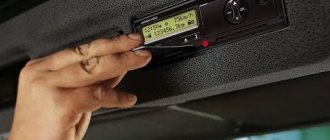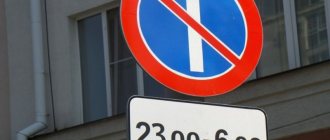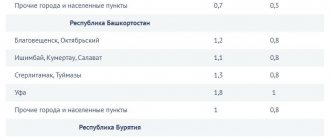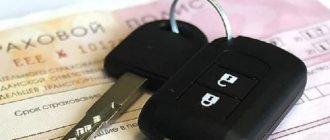Good day, today I will tell you why drivers with experience have a KBM of 1 or does not change, we will look into the reasons for the small KBM and try to figure out why the bonus-malus is reset to zero. We will list the standard reasons and show with examples how your bonus malus can change.
Let me remind you once again that every time you insure yourself (for a year and do not terminate the policy early), the BMR should decrease by 0.05 points or increase by 1 class. Which ultimately gives a 5% discount on the MTPL policy. The maximum discount is 50%, which corresponds to KBM 0.5 or class 13.
Why MBM can grow or reset
- The break in insurance is more than 1 year. This rule is enshrined in the law on compulsory motor liability insurance. According to Note 10 to paragraph 2 of the Bank of Russia Directive on Tariffs, to determine the class, information on compulsory insurance contracts that expired no more than one year before the start date of the insurance period under the compulsory motor liability insurance contract is taken into account.
- Road accident. For which there was an insurance payment in favor of the other driver. Those. you were the culprit. See the table for how the bonus-malus ratio will change.
- The policy was terminated early. This does not result in a reset. But in this case there is no decrease in the BMF, i.e. it remains the same at the time of receipt of the policy.
In what cases is the KBM reset, how to check your KBM and restore it
In general, the price of a compulsory motor insurance policy depends on 7 different conditions (more details here), but it is the calculation of the CBM that often becomes the subject of complaints and indignation from motorists. Therefore, in the large project of the Ministry of Finance and the Central Bank for the liberalization of compulsory motor insurance (more about this here) there is a clause on changing the system for calculating the Bonus-Malus coefficient (BMC).
“We consider it necessary, in the interests of consumers, to use the entire arsenal of available measures to restore order and eliminate unfair practices. Such as imposing services, non-application of the bonus-malus coefficient,” commented Elvira Nabiullina, Chairman of the Central Bank, speaking at a plenary meeting in the State Duma.
The statement by the head of the Central Bank inspires motorists, because, as a rule, insurance companies make mistakes in their favor. The price of a compulsory motor insurance policy increases several times, rather than decreases.
Therefore, the reform of the Bonus-Malus coefficient is the most anticipated step in the MTPL liberalization program.
KBM is a coefficient by which the driver is given a discount for accident-free driving.
The maximum discount can be 50%. But not all drivers can count on such a large discount, but only those who have been driving for more than ten years without an accident.
If you did not buy a compulsory insurance policy because:
- drove under a policy without limiting the number of drivers
- They just sold their car.
In the listed cases, the KBM is “reset to zero”. This means that all your accident-free experience has evaporated. So, the MTPL reform will correct this unfortunate omission. The KBM will no longer be reset; it will be permanently “tied” to the driver. The entire history will always be available to calculate the cost of the policy.
However, not everything is smooth here either. Many motorists may be in for another surprise from KBM. The fact is that after replacing a driver’s license, the KBM is also often reset. Experienced drivers who have been driving for decades turn out to be inexperienced and dangerous “snowdrops” from the point of view of insurance systems. While this shouldn't happen, it often does.
Drivers, as a rule, do not pay attention to this, they simply complain to the insurance company. However, not knowing about this nuance, they buy compulsory insurance at a premium.
By the way, read the story about the replacement of rights, which turned into an expensive insurance policy, here.
Taking into account the fact that the KBM will play one of the main roles , we advise you to check it right now. If you feel that your CBM does not correspond to the number of accidents in which you were at fault, immediately contact the Central Bank. It is there that your KBM will be adjusted as expected. You can file a complaint using the link here.
Check your KBM
Reasons why KBM may not grow that are not described in laws and regulations
- Change of rights. Currently one of the most common reasons. Read how to avoid it here.
- Several policies. In this case, “doubling” of the CBM may occur. Example: 1 policy with KBM 1, another 0.8 - yes, this happens. The policy with a value of 0.8 ends first. The value 0.75 is transferred (you receive a 5% discount) to RSA. Then policy 1 ends, and the value 0.95 is transferred to RSA. And as a result, you will have an up-to-date KBM of 0.95.
- Errors in the RSA database. This could be any typo in your full name, date of birth or driver's license details.
- Insurance agent. You can intentionally or accidentally make a mistake in your data in order to receive KBM 1, for the maximum insurance premium. The easiest thing is to make a mistake in the date of birth; it is not included in the MTPL policy, so it is almost impossible to notice.
- The insurance company did not provide any data. At the moment this is practically irrelevant. Only in rare cases of bankrupt companies or periods of up to 13 years.
The reasons for the increase or drop in the CBM by 1 are not specified in the laws.
The insurance period is more than a year. The norm is enshrined in the law on compulsory motor liability insurance. In accordance with Note 10 to clause 2 of the Bank of the Russian Federation Directive on tariff plans, when determining classes, data on insurance contracts that expired no more than a year before the start of the insurance period under the MTPL contract are taken into account.
A traffic accident involving the other driver's insurance claim, which means you are at fault. Changes to the KBM, below are tables containing all calculations.
Early termination of the policy. In this case, there is no reset. There is no reduction in the coefficient. It remains at the same level as at the time the policy was issued.
Important advice: Always save the numbers of your old driver's license and MTPL policy; this will greatly facilitate the restoration of the MTPL discount.
Examples of our clients' KBM history
Example 1
The client came with new rights with the current value of 1. How the BMC changed for the old rights can be seen above. Why this happened is too late to say.
Result: KBM 1 → 0.5 - 50% discount on the policy
Example 2
Here were new rights without data on the old ones, but with a check mark in our form for requesting old rights.
Result: KBM 0.85 → 0.5 - 50% discount on the policy
Example 3
The client came with new rights and the current value of 1. It was not possible to reduce more than for the old rights, but the discount from the old rights was transferred.
Result: KBM 0.1 → 0.85 - 15% discount on the policy
Example 4 - a case of a traffic accident
Here are the new rights and a checkmark for requesting old ones. The person insured the car with a new license, without particularly understanding the CBM with a value of 1. Then he got into an accident. The increasing CBM was applied by 1 and the result was a value of 1.55, as it should be according to the table. But the fact is that the value of the old rights was not taken into account. We submitted a request to the RSA and recalculated the KBM.
Result: KBM 1.55 → 1 - saving 55% of the overpayment for the policy
(16 votes, rating: 3,81)
What steps should I take?
Contacting our company for KBM restoration guarantees a quick and simple solution to the problem within 1 to 3 business days. Let's look at some examples of clients we have worked with.
First example. Loss of KBM: why there are no changes and increases.
| Date of inspection | Bonus and manus coefficient | Previous KBM |
| 11.03.19 | 0,8 | 0,85 |
| 11.03.18 | 0,85 | 0,9 |
| 11.03.17 | 0,9 | 0,95 |
| 11.03.16 | 0,95 | 1 |
| 11.03.15 | 0,7 | 0,75 |
| 11.03.14 | 0,75 | 0,8 |
| 11.03.13 | 0,8 | 0,85 |
Our client appeared with new rights, the current value of the BMR was 1. Changes in the coefficient for the old certificate can be seen from this table. The reasons for what happened cannot be found out; it’s too late.
The result obtained: KBM 1 → 0.5 - 50 percent discount on OSAGO policy.
Second example.
| Date of inspection | Bonus and manus coefficient | Previous KBM |
| 09.03.19 | 0,85 | 0,9 |
| 09.03.18 | 0,9 | 0,95 |
| 09.03.17 | 0,95 | 1 |
| 09.03.16 | 1 | |
| 09.03.15 | 1 | |
| 09.03.14 | 1 | |
| 09.03.13 | 1 |
There is a new license without information on the old ones, but in the application form we have a checkbox asking for information about the old rights.
The result obtained: KBM 0.85 → 0.5 - 50 percent discount on OSAGO policy .
Third example.
| Date of inspection | Bonus and manus coefficient | Previous KBM |
| 09.03.19 | 0,85 | 0,9 |
| 09.03.18 | 0,9 | 0,95 |
| 09.03.17 | 0,95 | 1 |
| 09.03.16 | 0,95 | 1 |
| 09.03.15 | 0,95 | 1 |
| 09.03.14 | 1 | |
| 09.03.13 | 1 |
Our client appeared with new rights, the current value was 1. A greater reduction in comparison with the old certificate was not achieved, but we managed to transfer the discount on the old certificate.
The result obtained: KBM 0.1 → 0.85 - 15 percent discount on OSAGO policy.
Fourth example (there was an accident).
| Date of inspection | Bonus and manus coefficient | Previous KBM |
| 03.03.19 | 1,55 | 1 |
| 03.03.18 | 1 | |
| 03.03.17 | 1 | |
| 03.03.16 | 1 | |
| 03.03.15 | 1 | 1 |
| 03.03.14 | 1 | |
| 03.03.13 | 1 |
In this case, we received a new ID and a check mark for requesting the old one. The car was insured using a new driver's license. At the same time, they did not particularly understand KBM 1. Then there was a traffic accident. The Increasing Factor was applied by 1, giving a total of 1.55, as in the table. However, data from the old ID was not taken into account. After submitting our request to RSA, the coefficient was recalculated.
The result obtained: KBM 1.55 → 1 - 55 percent savings
How to find out the coefficient yourself
If a driver wants to find out his own BMI for the next year of insurance, then he needs a table from which he can see everything.
Here you need to know the following. In the first year of insurance, the driver receives class 3. In this case, its coefficient is equal to one and does not have any effect on the cost of compulsory motor liability insurance.
If, for example, due to the fault of this driver, not a single accident occurred during the first year of driving, then your attention should be paid to the highlighted line in the table and to the column with the content “0 insurance payments”, where the number 4 appears.
This means that next year the driver will be assigned class 4 instead of 3rd, and its coefficient will decrease by 5%, i.e. will no longer be equal to one, but 0.95.
Thanks to accident-free driving, the driver receives a 5% discount in case of renewal of the MTPL contract. If the second year of driving under insurance for the driver is not so successful, and he gets into an accident due to his own fault, then his class is lowered and becomes 2, and the BMR rises to 1.4.
This means that when the OSAGO policy is renewed, its price will increase by 40%. In order to return the driver to class 3, he will need to drive the entire next year without an accident (at least through his fault) and then he will not overpay for the insurance policy.
How to recover
If the cases listed above are not the reason why your policy discounts have been reset to zero, then you need to file a complaint against KBM under OSAGO with your insurer. To ensure that your problem is considered as soon as possible, collect the necessary documents. One of these documents will be data taken from the RSA website about previous policies.
Remember that it is impossible to restore KBM after a break of more than a year, since the bonus for expired insurance is legally reset to zero. In other cases, such a situation must be resolved with the insurer, and if he does not respond to your application, then the resolution of the disagreement is possible only through the court.
Bonus-malus coefficient - what is it?
The coefficient with such an unusual name rewards drivers who follow traffic rules and do not get into accidents. Thus, accident-free driving during the year preceding receipt of the policy will give drivers a discount on issuing an MTPL policy. What does accident-free driving mean?
1. The driver was not seen in the accident.
2. The driver was not found guilty of the emergency situation.
3. When an emergency occurred, the insurance company did not make payments to the injured party.
There are 15 driving classes in total, which are characterized by a certain coefficient value.










